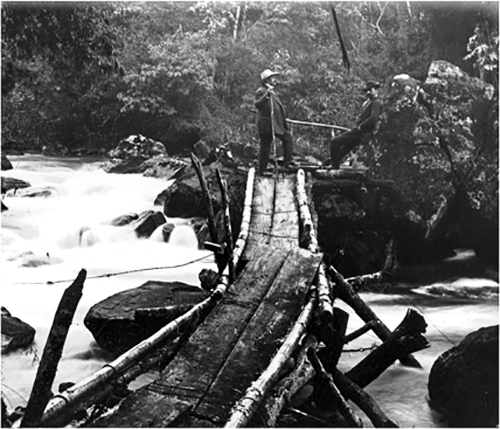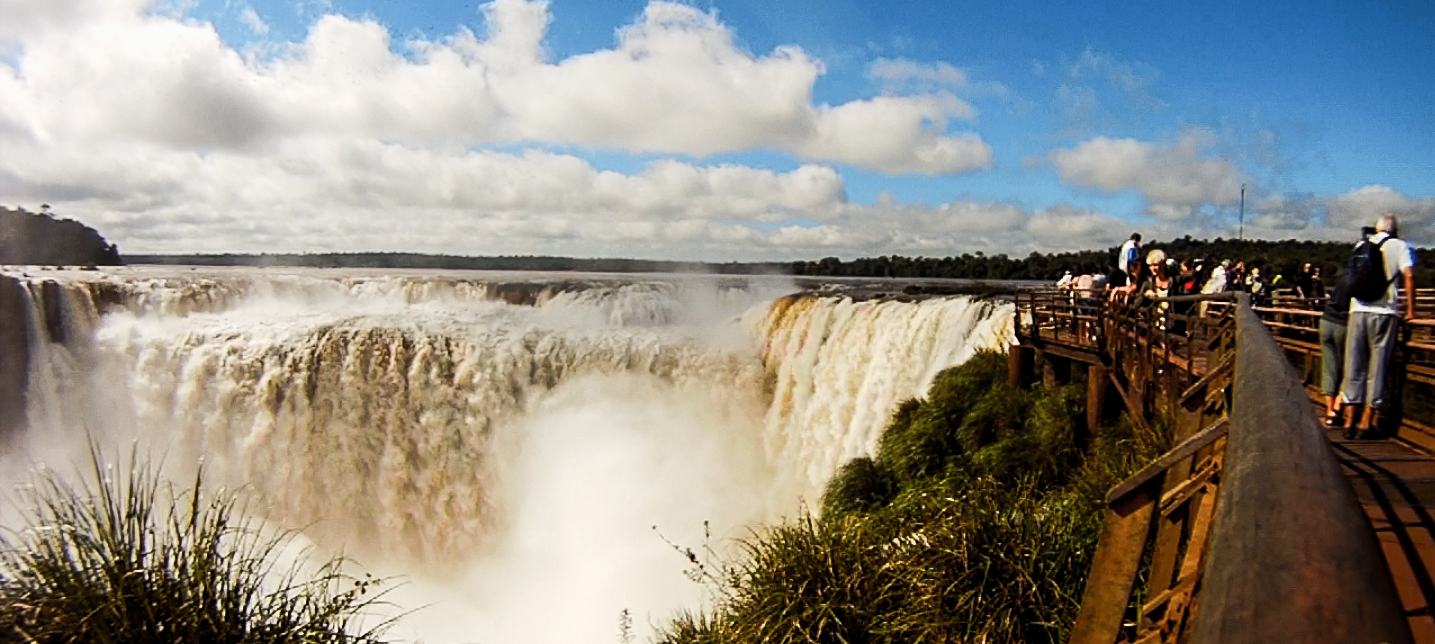The Past, Present and Future of the Walkways at Iguazú Falls.

On a visit to the immense waterfalls at Iguazú, approaching either from Brazil or Argentina, you will explore a network of walkways and circuits over, behind and below the falls, allowing for spectacular panoramic views overlooking the ferocious waters. In June 2014 the volume of water not only broke records but, unfortunately, many of the walkways leading to the Devil’s Throat. The Brazilian authorities scrambled to fix the walkway on their side as the world arrived for the 2014 FIFA World Cup.
On the Argentinian side of the falls, the walkway overlooking the Devil’s throat was severely damaged by the power of the water, with several sections being washed away and many of the concrete pillars which secure the walkways needing repair. It was only fully reopened on 31 January 2015, after months of risky work on the edge of the waterfalls.
The last time something like this happened was back in 1992, when the previous record of high water was set. The Iguazú River washed away 28 sections of the walkway and took 3 weeks to repair. The amount of water passing through the falls in June 2014 was 10,000 cubic metres per second higher than in 1992, so not surprisingly, much more damage occurred. 

The walkways at Iguazú are quite a feat of engineering, allowing visitors to peer over the top of the cataracts the foaming river below. The pasarelas link native rocks and concrete structures, spanning scores of rivulets as they cascade into the gorge. They were designed and constructed by Frenchman Charles Thays, an architect also responsible for many of the paths and walkways around the parks of Buenos Aires. Their construction was started in 1912, paid for by a donation by Victoria Aguirre. In 1934, the National Park of Iguazú was formed and the construction of the park buildings and walkways continued. The town of Puerto Iguazú also grew as tourism to the area increased, and in 1972 an airport opened, and regular flight services began from Buenos Aires. Still to this day, Argentines constitute the most numerous visitors to the falls.

It used to be possible for visitors to take a rowing boat to the top of the falls to take pictures and peer over into the abyss as their poor boatman fought furiously against the current with an oar. According to some reports this ended abruptly in 1938 after a boat full of German tourists went a little too close to the edge and went tumbling into the abyss. On the Brazilian side rowing boat “tours” out to a rock that overlooks the Devil’s Throat were still operating as recently as 1975. These days the only boat rides available are from below the falls on both sides of the border where the risk of death is dramatically reduced, although the risk of getting completely soaked (and having a little too much fun) is much higher!
Most of the walkways around the park were installed in 1999, at a cost of $15 million. The new walkways are retractable allowing them to be pulled in when the water pressure exceeds safe levels. One can only hope that the rainfall which occurred last year, causing the Iguazú river to rise by a whopping 6m to destroy many of the walkways, was a freak occurrence. By March 2015, the month when the Falls are usually at their fullest and one of the most spectacular sights in all of Latin America is at its most awe-inspiring and powerful, you can feel secure on these newly refurbished walkways.

Tailor-made holidays
Flexible, custom-made holidays to Latin America created to match your exact requirements: our tailor-made itineraries are as unique as the clients for whom they are designed.
Design my tripPapagaio
Your edit for Latin American inspiration
Our exciting range of articles on Latin America explore everything from iconic destinations and lesser-known cultural gems to delicious traditional recipes. You’ll also find exclusive travel tips, first-hand client reviews and the chance to get your personal questions answered by our travel experts.
View Extraordinary Inspiration






































